Approximately 125 years ago, a child named Henry Darger was born in Chicago. His life was lonely and riddled with pain ― the majority spent working as a janitor, attending mass or working alone in his Chicago apartment.
When he died in 1973, he had few companions save for his landlord Nathan Lerner, who, upon clearing out his former tenant’s belongings, made an unusual discovery. Among the possessions of his unassuming lodger, Lerner found thousands of pages of text, disturbing and dreamlike drawings, and one of the longest works of fiction ever made.
Darger is now regarded as one of the most exceptional outsider artists of all time. He’s is often described as an “outsider” because he was self-taught, isolated and removed from artistic institutions. It also doesn’t hurt that few details are definitively known about Darger’s life, rendering his violent and visionary works all the more mystifying and retroactively transforming him into a sort of urban legend.
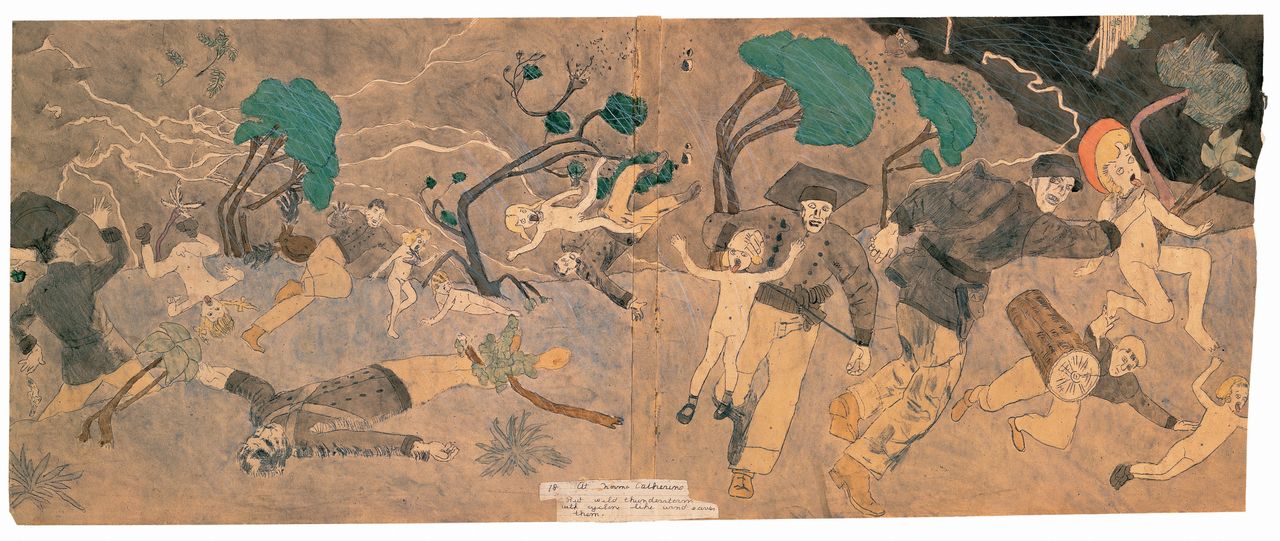
In 2000, Intuit ― a nonprofit organization dedicated to the preservation of outsider art ― acquired the contents of Darger’s Lincoln Park apartment, where he lived and worked for 40 years. In 2008, Intuit used these belongings to build an environment meant to mimic Darger’s apartment, thereby offering his fans and skeptics a mediated glimpse into the artist’s world.
In honor of the 125th anniversary of Darger’s birth, Intuit has scheduled a year-long string of exhibits and events focusing on the artist and his work. On view until the end of May is a show called “Source Materials,” featuring clippings of children’s books, comics, cartoons and other documents referenced in Darger’s epic, The Story of the Vivian Girls, in What Is Known as the Realms of the Unreal, of the Glandeco-Angelinian War Storm Caused by the Child Slave Rebellion.
This verbose title ― often referred to as The Realms, for short ― hardly hints at the overgrown narration that blossoms across Darger’s 15,145-page tale. It’s a book so long that, according to rumor, no one has ever read it start to finish. What’s more, there is an 8,000-page sequel.
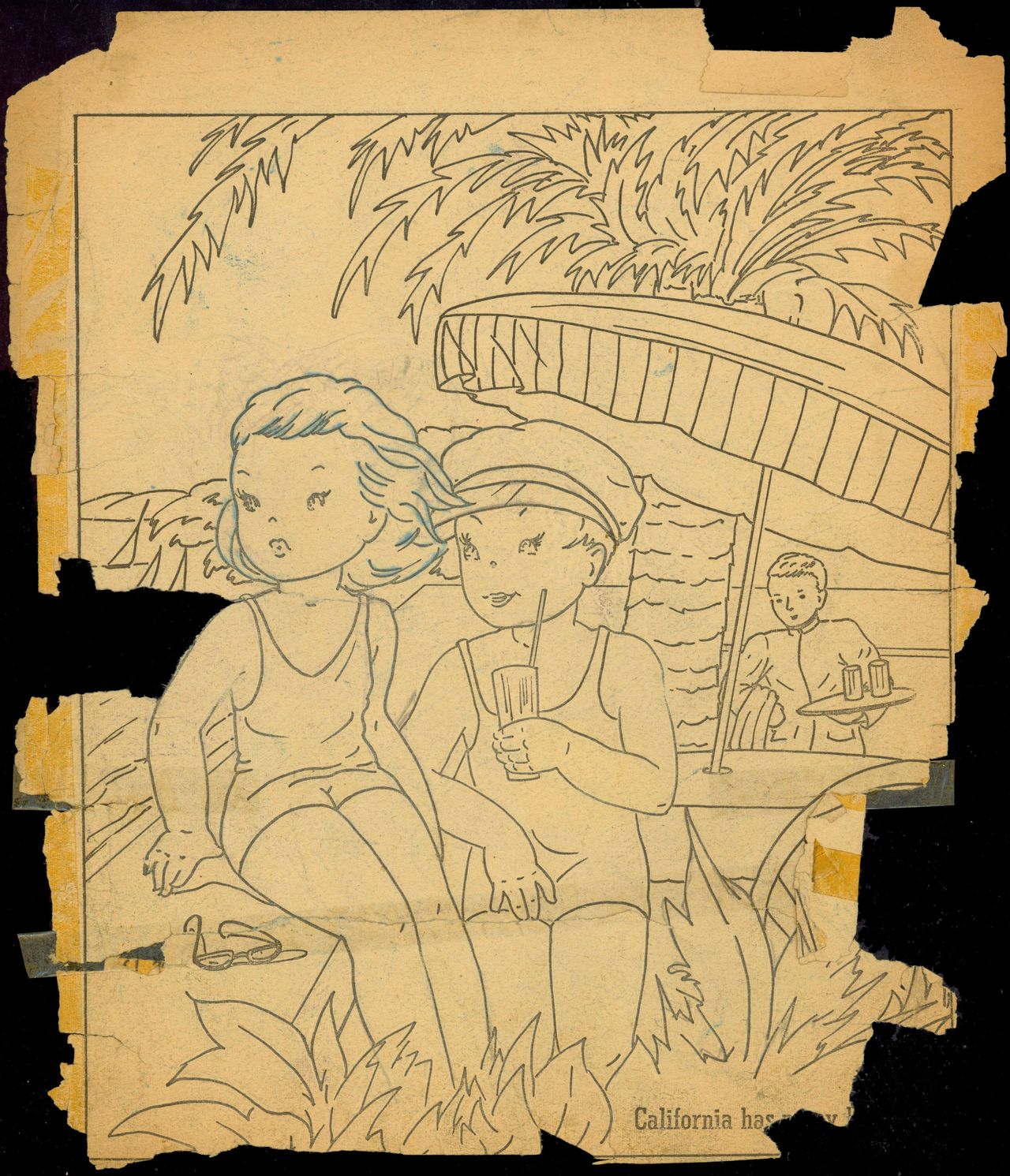
The story revolves around the Vivian Girls, seven noble, young princesses hailing from the Catholic and moral land of Angelina, as they battle the Satan-worshipping Glandelinians, an evil empire who practices child slavery and torture. Although the girls are framed as the young heroines, they endure plenty of graphic horrors at the hands of their captors ― including strangulation, crucifixion and disembowelment ― along the way.
“Little girls, from the ages of nine, eight and even younger, were tied down stark naked and a spade full of red-hot live coals laid on their bellies,” one excerpt reads. “Scores upon scores of poor children were cut to pieces, after being strangled to death ... Children were forced to swallow the sliced fragments of dead children’s hearts ... Their protruding tongues were extracted.’’
The fact that the depictions of darling girls being mutilated, tortured and killed appear in the honeyed, retro aesthetic of old-school bedtime books makes them all the more alarming.
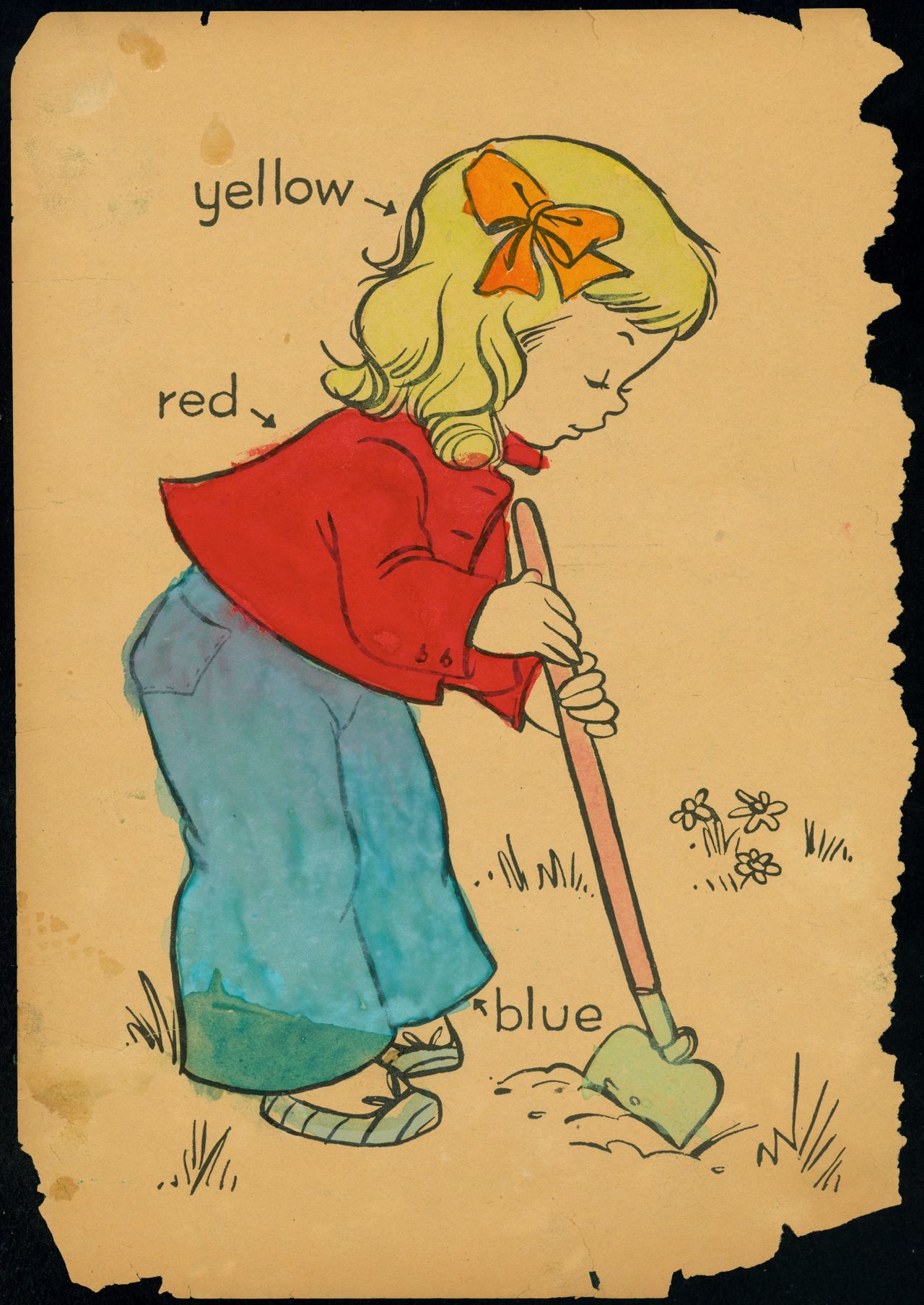
The chilling details of Darger’s visuals in The Realms raise a candle to the depths of his imagination. His ambiguities are thought to have mirrored his own inner battles, too ― his simultaneous desire to enact suffering one minute and thwart it the next. Occasionally, Darger inserts himself into the narrative, both as General Darge (a “protector of children”) and as a bloodthirsty Glandelinian. He also drafted two alternate endings: Good prevails in one, evil in the other.
Ambiguity is present, as well, in the very anatomy of Darger’s characters, who include young girls drawn with penises. Myriad hypothesis circle this strange detail. Perhaps Darger wasn’t familiar with female genitalia, or felt torn between male and female himself, as did a character in his other book, Crazy Horse. Whatever the personal motivation for Darger’s choice, it speaks to his interest in illustrating the paradoxical, the two-at-once, the eternal in-between.
From the little that is known about Darger’s life, it is clear his relationship with the concept of childhood was intense and fraught. Many art historians account for his obsession with childhood because of the traumas endured in his own. At 4 years old, Darger’s mother died during childbirth and his newborn sister was immediately put up for adoption. At 8, his father, impoverished and ill, relinquished Darger to a home for boys. After lashing out in school, he was committed to the “Asylum for Feeble Minded Children,” a nightmarish, abusive institution that Darger eventually escaped at 17.
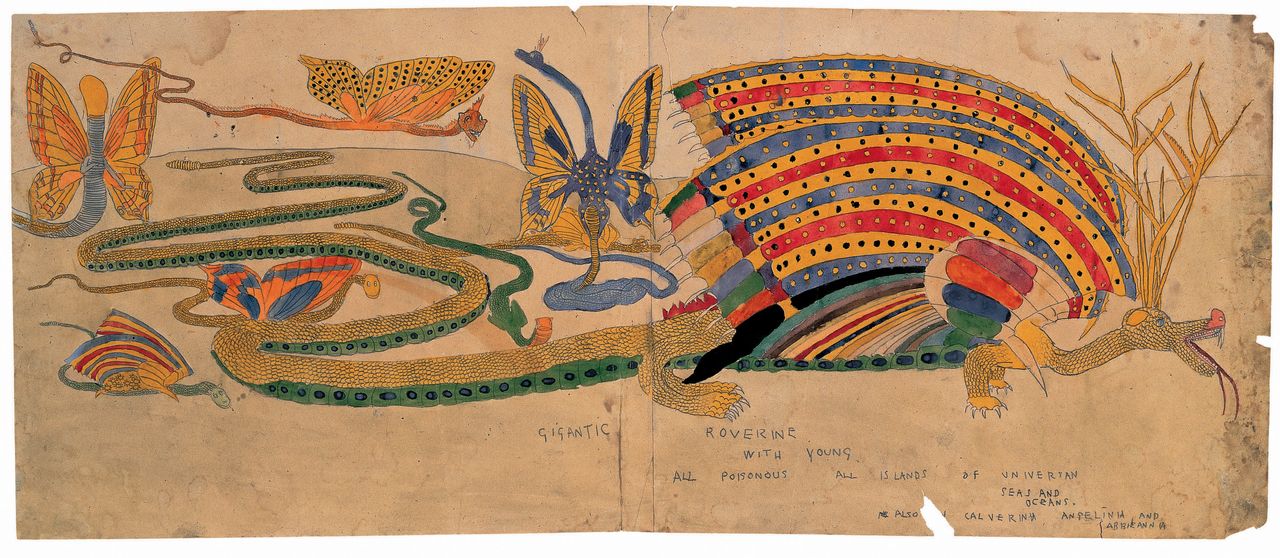
After hopping a train back to Chicago, Darger went on to live what, from the outside, resembled a modest, solitary life. His free time, however, was spent furiously transcribing fears and fantasies into wild and sprawling narratives, formed both from images and words.
Because he never went to art school or received technical training, Darger drew heavily from source materials in rendering his picture-perfect girls. He hoarded scraps of imagery that he would trace, copy and collage onto this burgeoning canvases. The resulting works combine the immediately recognizable innocence of sweet storybook illustrations with the fermenting horror of Darger’s carefully inflicted suffering, yielding some of the most difficult-to-digest depictions of all time.
“Source Materials” provides a tour through the unwitting accomplices in Darger’s twisted fantasies. Horns from a ram in a coloring book emerge in dragon-like beasts he called called Blengins. And innocent children, pictured stirring cereal and riding swings, end up splayed and bloodied on Darger’s page.
Perhaps some of the cult fixation on his sources is correlated to the dearth of available information regarding most aspects of his life. The black-and-white coloring book pages serve in place of the family albums, report cards, artist notes and other primary documents we are not privy to. The sugary sweet scraps show the Vivian Girls and their fantastical cohorts in better days, before they got wrapped up in the brilliant nightmares of one lonely janitor.
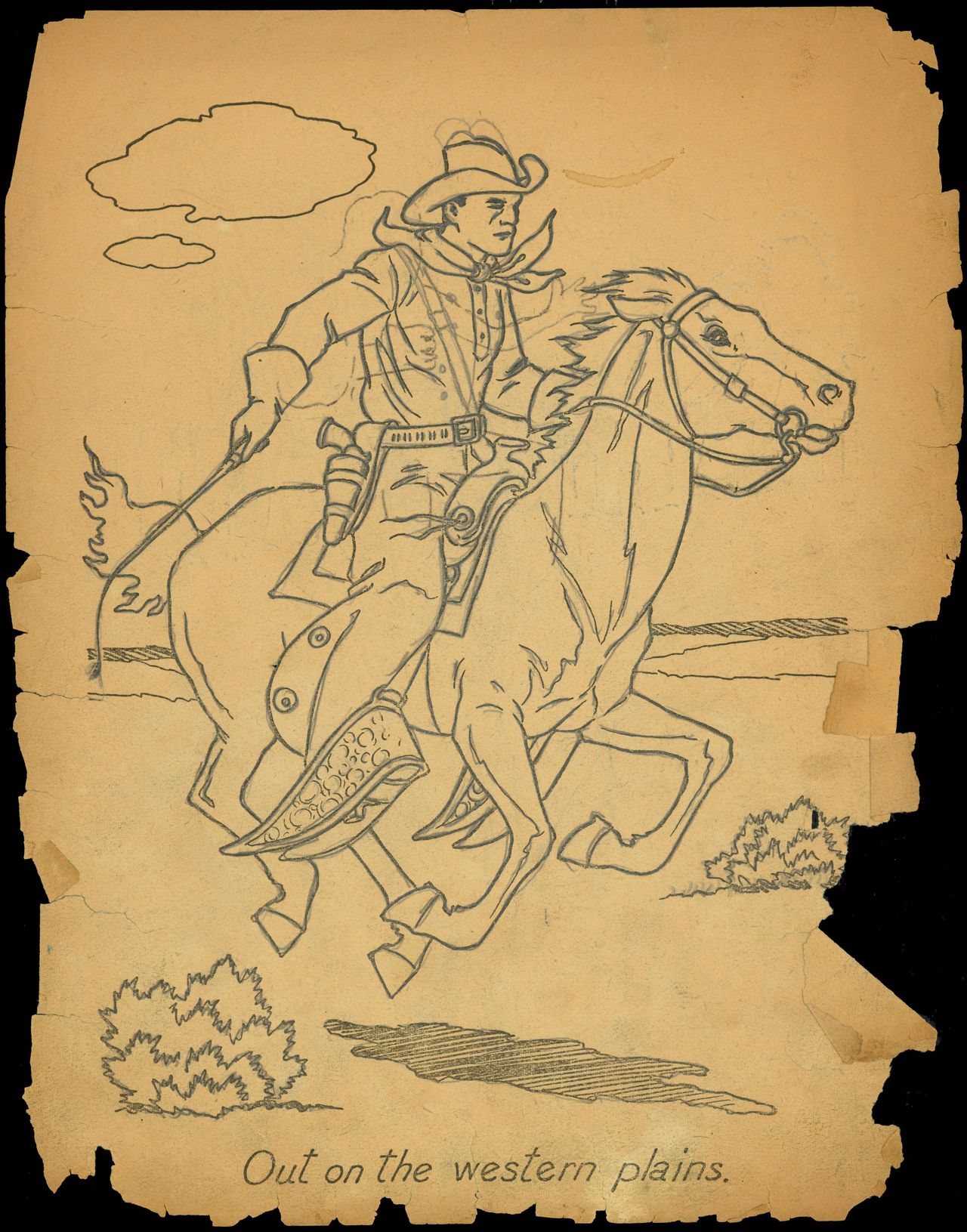
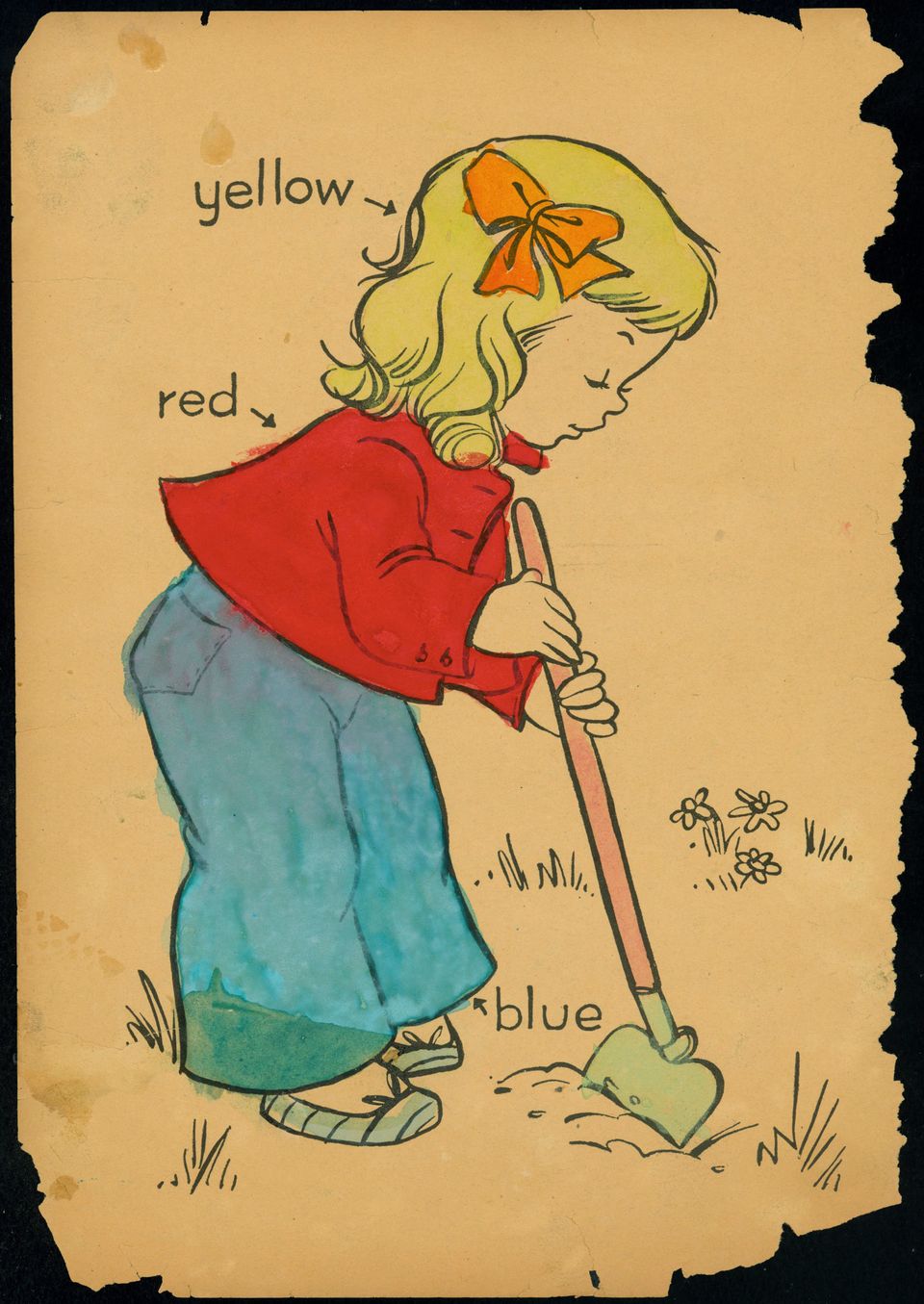
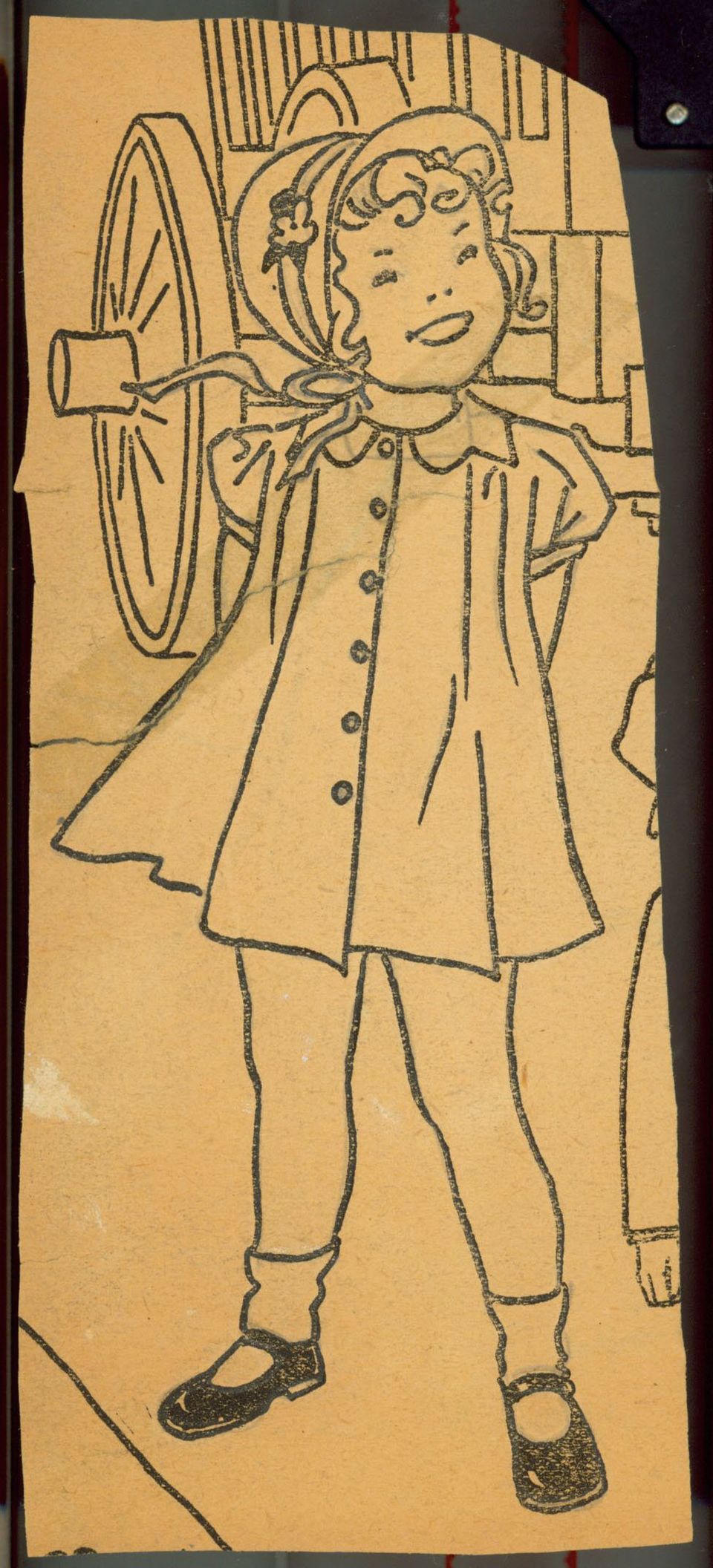


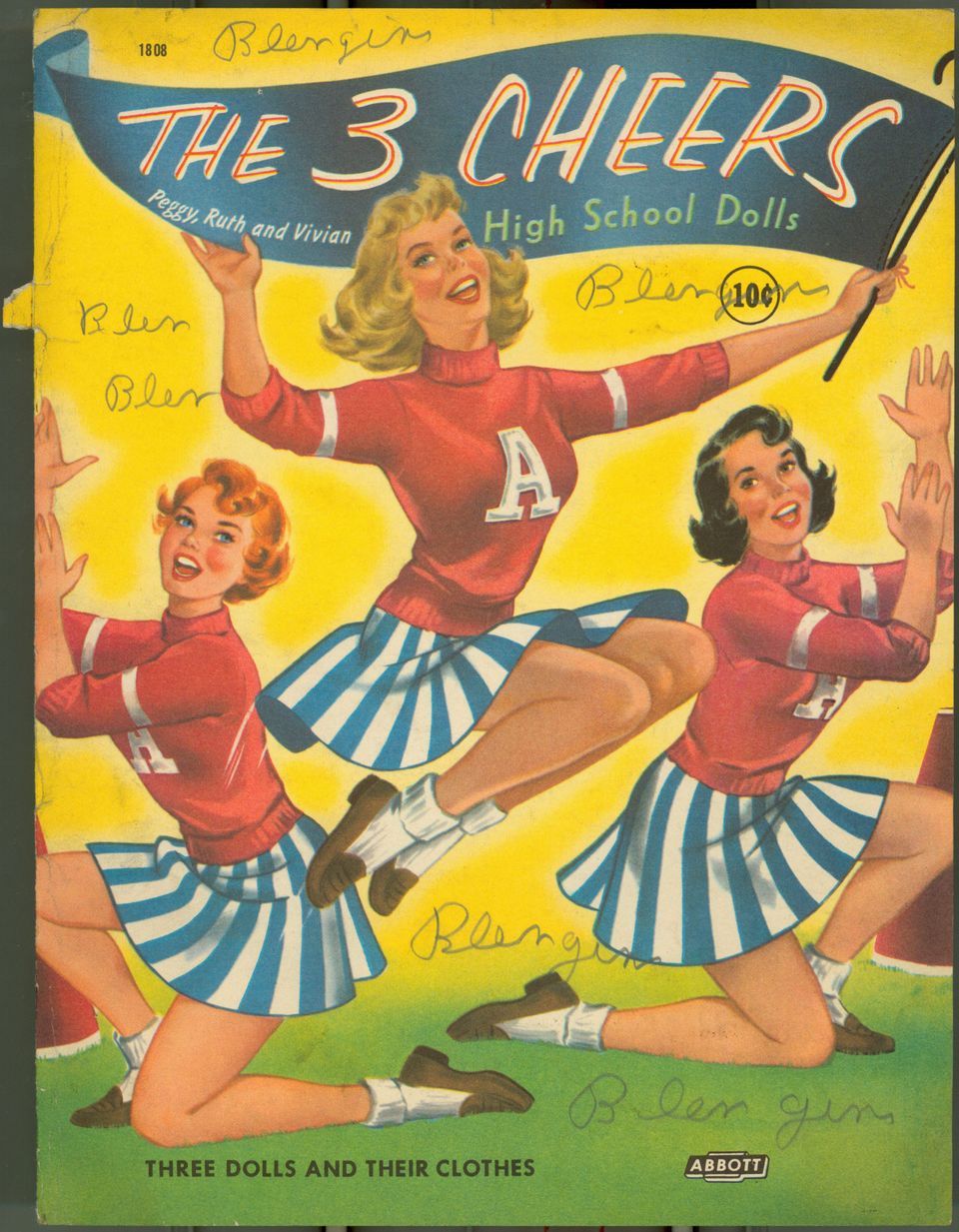
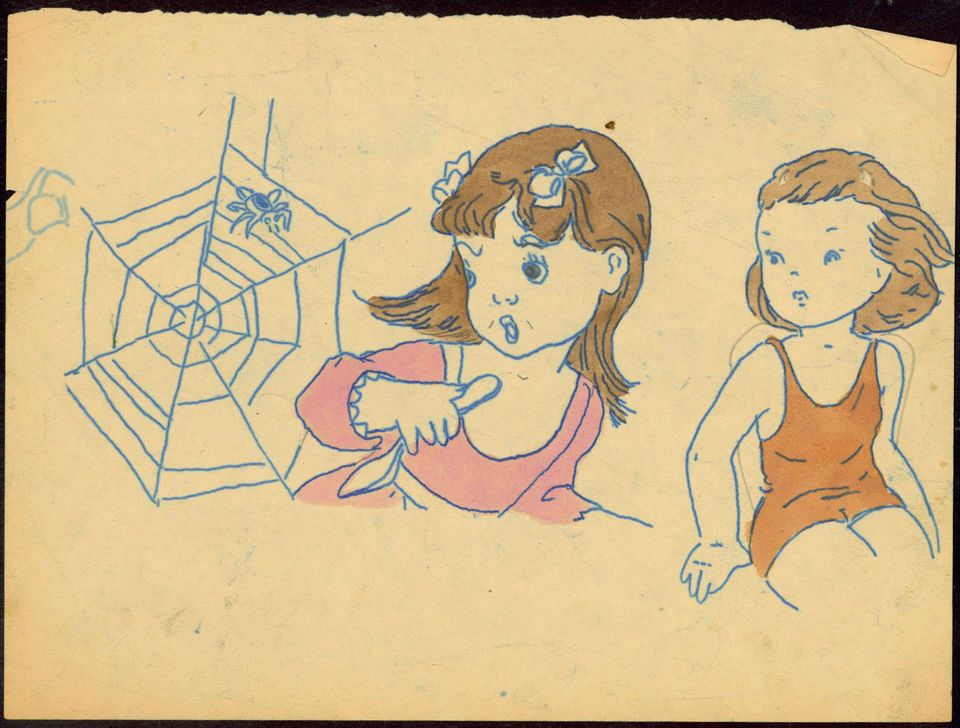



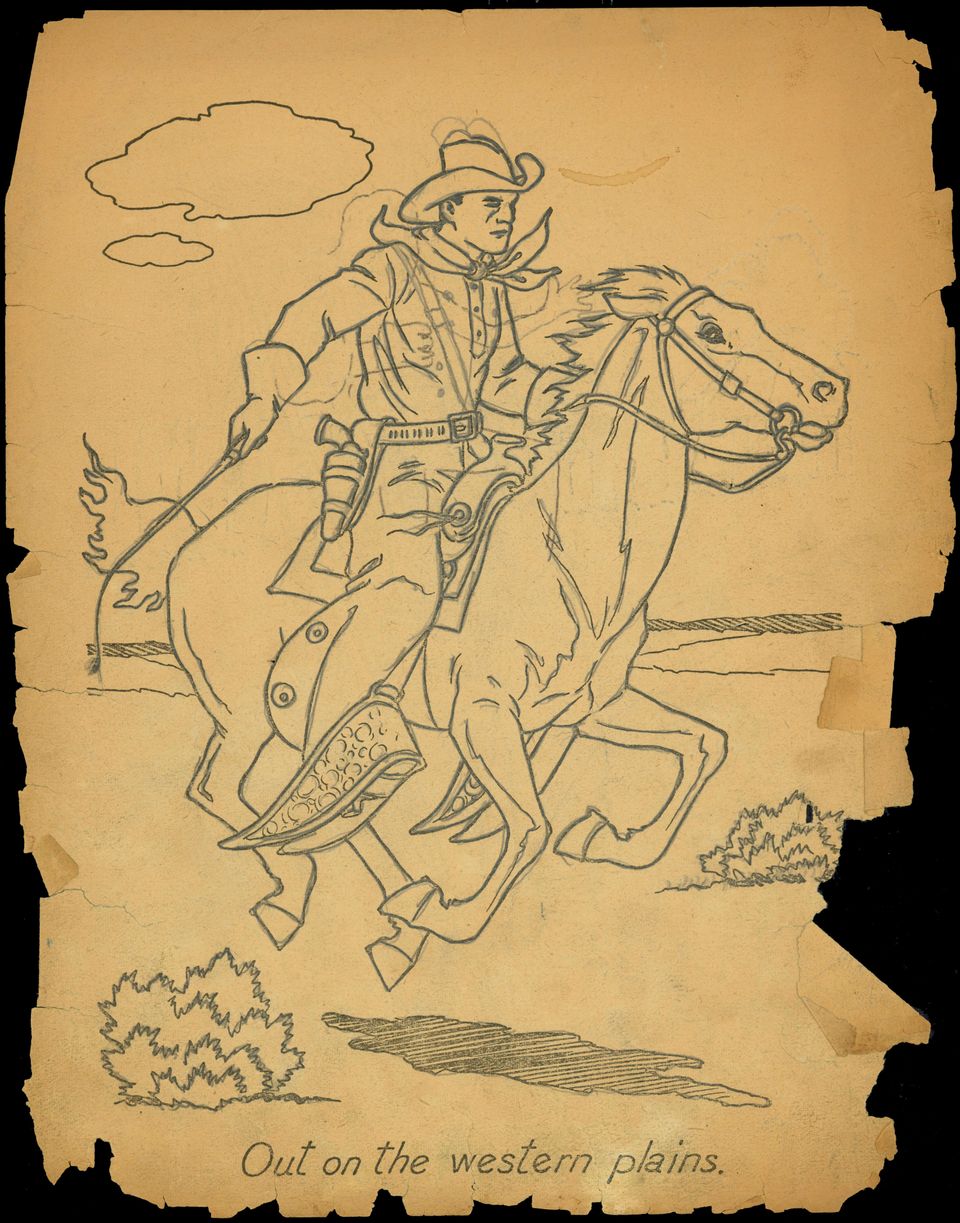
"Henry Darger: Source Materials," curated by Alison Amick, runs until May 29 at Intuit: The Center for Intuitive and Outsider Art in Chicago.
